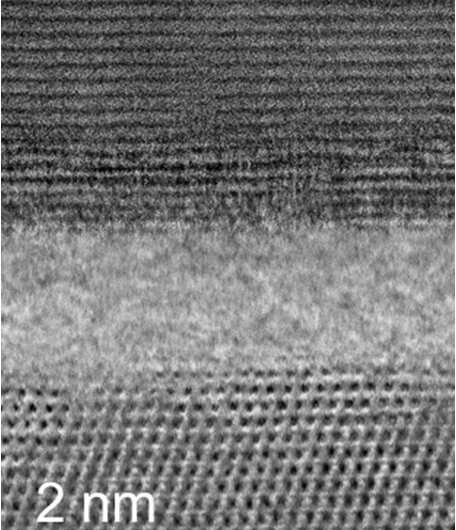
JUNE 30, 2021 by University of California, Los Angeles
Collected at: https://techxplore.com/news/2021-06-heat-management-material-cool.html?utm_source=nwletter&utm_medium=email&utm_campaign=daily-nwletter

UCLA engineers have demonstrated successful integration of a novel semiconductor material into high-power computer chips to reduce heat on processors and improve their performance. The advance greatly increases energy efficiency in computers and enables heat removal beyond the best thermal-management devices currently available.
The research was led by Yongjie Hu, an associate professor of mechanical and aerospace engineering at the UCLA Samueli School of Engineering. Nature Electronics recently published the finding in this article.
Computer processors have shrunk down to nanometer scales over the years, with billions of transistors sitting on a single computer chip. While the increased number of transistors helps make computers faster and more powerful, it also generates more hot spots in a highly condensed space. Without an efficient way to dissipate heat during operation, computer processors slow down and result in unreliable and inefficient computing. In addition, the highly concentrated heat and soaring temperatures on computer chips require extra energy to prevent processers from overheating.
In order to solve the problem, Hu and his team had pioneered the development of a new ultrahigh thermal-management material in 2018. The researchers developed defect-free boron arsenide in their lab and found it to be much more effective in drawing and dissipating heat than other known metal or semiconductor materials such as diamond and silicon carbide. Now, for the first time, the team has successfully demonstrated the material’s effectiveness by integrating it into high-power devices.

In their experiments, the researchers used computer chips with state-of-the-art, wide bandgap transistors made of gallium nitride called high-electron-mobility transistors (HEMTs). When running the processors at near maximum capacity, chips that used boron arsenide as a heat spreader showed a maximum heat increase from room temperatures to nearly 188 degrees Fahrenheit. This is significantly lower than chips using diamond to spread heat, with temperatures rising to approximately 278 degrees Fahrenheit, or the ones with silicon carbide showing a heat increase to about 332 degrees Fahrenheit.
“These results clearly show that boron-arsenide devices can sustain much higher operation power than processors using traditional thermal-management materials,” Hu said. “And our experiments were done under conditions where most current technologies would fail. This development represents a new benchmark performance and shows great potential for applications in high-power electronics and future electronics packaging.”
According to Hu, boron arsenide is ideal for heat management because it not only exhibits excellent thermal conductivity but also displays low heat-transport resistance.
“When heat crosses a boundary from one material to another, there’s typically some slowdown to get into the next material,” Hu said. “The key feature in our boron arsenide material is its very low thermal- boundary resistance. This is sort of like if the heat just needs to step over a curb, versus jumping a hurdle.”
The team has also developed boron phosphide as another excellent heat-spreader candidate. During their experiments, the researchers first illustrated the way to build a semiconductor structure using boron arsenide and then integrated the material into a HEMT-chip design. The successful demonstration opens up a path for industry adoption of the technology.
More information: Joon Sang Kang et al, Integration of boron arsenide cooling substrates into gallium nitride devices, Nature Electronics (2021). DOI: 10.1038/s41928-021-00595-9
Journal information:Nature Electronics
Provided by University of California, Los Angeles
